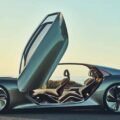
Animated movies have come a long way in terms of realism. Gone are the days when animated characters and settings looked flat or overly cartoonish. Today, they can look almost as real as the actual world. One of the tools that help achieve this level of realism is 3D photogrammetry software. This article will explore the various tools that add a touch of reality to digital surfaces in animated movies.
High-Quality Textures
Textures play a big role in making digital surfaces look real. By using high-quality images, animators can give objects a lifelike appearance. Whether it’s the fur on an animated animal or the surface of a digital rock, textures add depth and detail that make the object look more believable. To enhance this aspect, animators often spend time refining and optimizing these textures to ensure they appear as realistic as possible.
Advanced Lighting Techniques
Lighting can make or break the realism of an animated scene. Using advanced lighting techniques, animators can create the right mood and atmosphere. More importantly, they can make digital surfaces look real. Proper lighting can create shadows and highlights that give objects a three-dimensional look. It’s worth noting that different lighting setups are employed to achieve various effects, whether it’s the warm glow of sunlight filtering through trees or the harsh, dramatic lighting of a suspenseful scene.
Realistic Physics
In the real world, objects obey the laws of physics. To make animated movies more realistic, the same laws are applied to digital surfaces. This means ensuring water flows correctly, the fabric moves naturally, and objects fall or break believably. Realistic physics adds another layer of realism that makes the animated world more convincing. This attention to detail allows viewers to immerse themselves in the story without being distracted by unnatural movements or interactions.
3D Photogrammetry Software
Adobe states, “3D Capture, or photogrammetry, is the process of creating a 3D mesh with textures by capturing measurements from images.”
This software is used to create highly detailed models based on real-world objects. This software takes multiple photos of an object from different angles and uses them to create a 3D model. The result is a digital surface that looks incredibly real because it’s based on something from the real world. This tool is especially useful for creating natural elements like rocks, trees, and landscapes. Thanks to 3D photogrammetry, animators can capture the intricate details of real-world objects and seamlessly incorporate them into their digital environments.
Particle Systems for Small Details
Sometimes, it’s the little things that add the most realism. Particle systems create small details like rain, snow, or falling leaves. These systems can simulate the way these particles move in real life, adding a layer of realism that might go unnoticed but still contributes to the overall believability of the scene. Whether it’s the gentle flutter of butterfly wings or the way dust particles catch the light, these small details make the animated world feel alive.
Adding realism to digital surfaces in animated movies is a complex task that involves a variety of tools and techniques. From high-quality textures and advanced lighting to realistic physics and 3D photogrammetry, each tool plays a crucial role in making the animated world come to life. The result is a movie that not only entertains but also amazes one with its attention to detail and realism. The next time you’re watching an animated movie, you’ll know a bit more about the magic that went into creating it.

